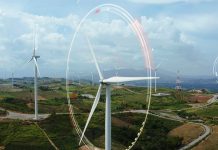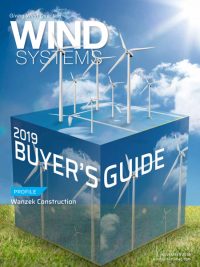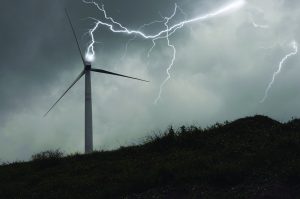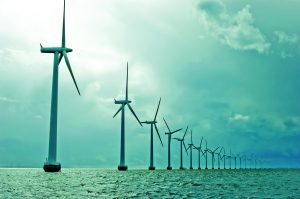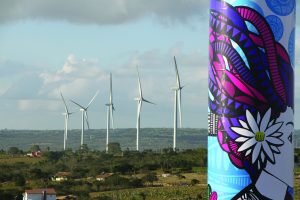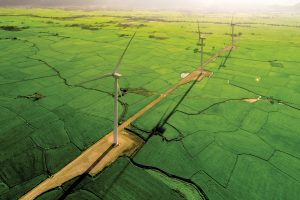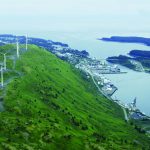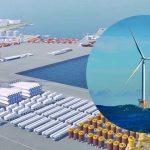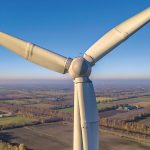Labeled as the “industries of the future,” all renewable power generating sectors are highly appreciated. Onshore and especially offshore wind turbines are one of the most promising technologies to produce clean sustainable energy. According to Windeurope, wind power installed more than any other form of power generation in Europe in 2017. Onshore installations grew 14.3 percent while offshore grew 101 percent compared to 2016. In total, Europe installed 15,638 MW of new wind power capacity during 2017.
Despite the sector’s booming development, the industrial maintenance of onshore and offshore wind turbines was and remains laborious and challenging, and reliability is a critical issue for operating wind-energy systems. All new wind turbines as well as the existing ones (about 486 GW in total) have to be operated and maintained carefully. According to recent studies, operation and maintenance (O&M) accounts for a share between 25 percent and almost 40 percent of levelized cost of energy (LCOE) [1]. The latest advances in mobile technology and the reduced cost of sensors and cloud-based data have encouraged the sector to deploy modern maintenance solutions.
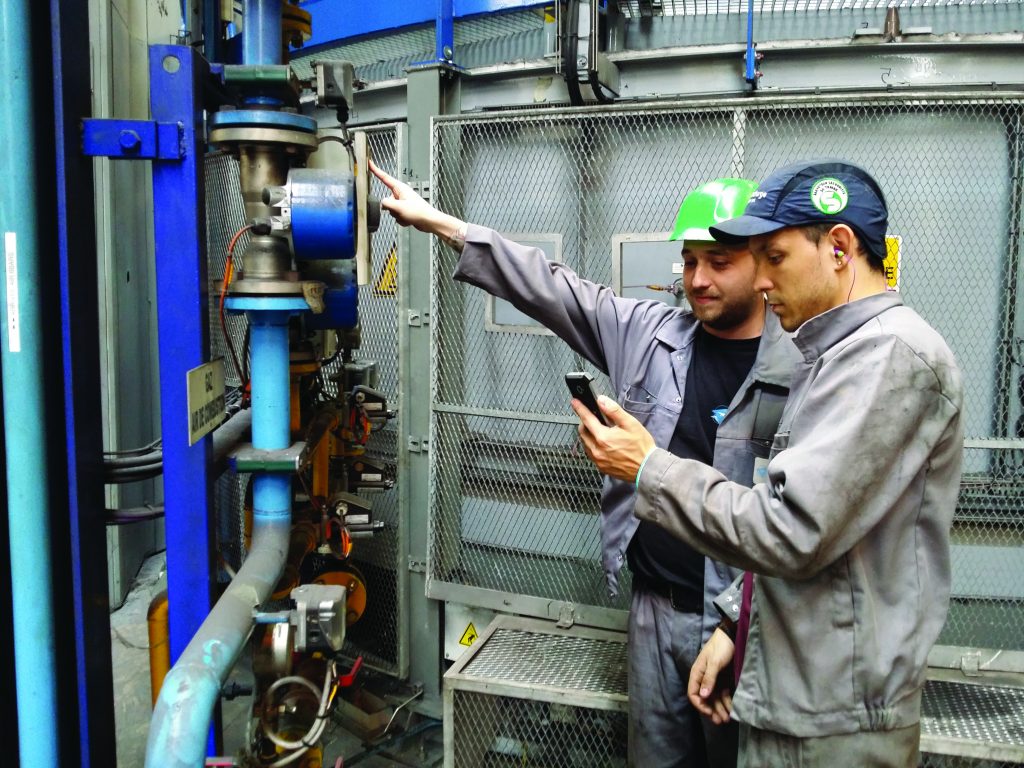
Next-gen CMMS (computerized maintenance management system) is of a crucial importance for the proper O&M of a wind farm, reducing unscheduled maintenance interventions and reorganizing the placement of scheduled ones only in low wind-speed months. Since offshore maintenance is extremely expensive, many professionals have sought a solution into generating data across multiple wind farms to develop optimization plans.
Thanks to Industry 4.0 technologies such as CMMS, the Industrial Internet of Things (IIoT), and machine learning, the industry can improve and even solve current challenges. And for those who are ready to gain a competitive advantage, the Industry 5.0 is already knocking on the door, ready to introduce prescriptive maintenance based on cognitive analytics.
Laborious and Expensive
Wind-turbine maintenance is mainly expensive because of the vehicles and vessels needed to access the remote locations of most wind farms. Additionally, weather conditions are not always favorable, and asset failures may result in long turbine downtime.
The size of the turbines doesn’t necessarily ease the maintenance interventions. These are massive configurations with thousands of delicate moving parts; each intended to achieve maximum efficiency and requiring specific maintenance since even a simple wrong move can trigger a breakdown. Facing all these challenges, there are still companies that service turbines only when necessary. In the long term, this is actually the most expensive approach, leading to shorter asset life and countless unscheduled interventions.
However, many professionals are concerned that even traditional approaches with proven outcome as preventive maintenance didn’t really reduce failures and unplanned downtime. Therefore, the sector is now increasingly incorporating IIoT and artificial-intelligence technologies to boost assets performance. Condition monitoring systems and predictive analytics are particularly appreciated when the occurrence of critical problems should be signaled.
In order to address the main maintenance problems of the sector as high costs and lack of historical data, the wind-power sector should target the establishment of an all-around lean maintenance program. The core of such a solution is a modern CMMS, tailored to the specific needs of the industry, flexible to evolve, and designed to connect to all ERP and sensor technologies.
Preventing failure instead of running turbines until they break is the only way to minimize unplanned component failure leading to electricity stoppages. The deployment of a reliable CMMS is the first and most important step to be taken to control and forecast such failures.
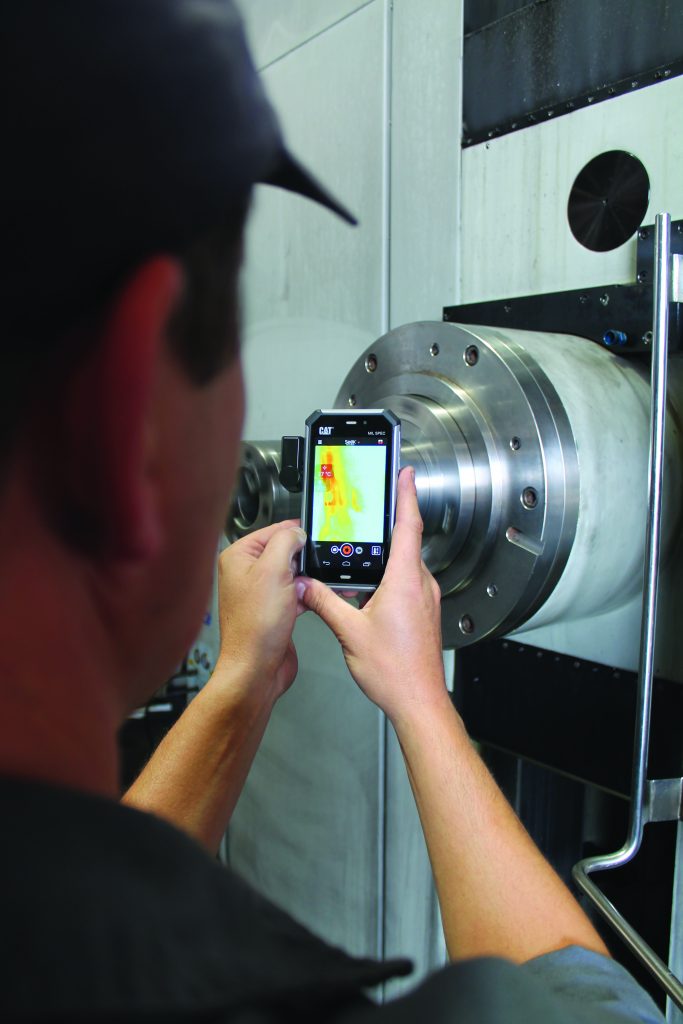
What Does Smart Maintenance Imply?
The wind-energy market generates tons of data and thus represents one of the most promising areas of industrial big-data application. The idea of smart maintenance is to store and analyze this data in order to be able to determine when maintenance should be performed on equipment assets. The means of smart maintenance include all possible latest Industry 4.0 induced maintenance tools. In general, smart maintenance should result in:
• Prolonged assets life.
• Increased return on the assets.
• Streamlined maintenance.
The arising challenge is how to get and analyze this data in a way that will allow you to act fast and easy in real time. Sensors mounted on the equipment are definitely an option. A next-gen CMMS will store and analyze this data in the context of other important information as intervention history, spare parts, other readings, and many more. A proper solution should also offer you the opportunity to receive notifications, 24/7 updates, and, of course, to geolocate a wind turbine.
The Next-Gen CMMS as a Digitalw Hub
A next-gen CMMS is an Industry 4.0 solution featuring an all-around maintenance program that promotes efficiency, safety, and asset optimization. This is the digital hub of the factory, streamlining maintenance tasks but also connecting employees, sensors, and ERP tools to collect, store, and analyze equipment data. All resources can simultaneously collaborate via the CMMS to solve critical problems, mitigate failures, and act fast.
The modern CMMS is mobile and accessible anytime and anywhere. Besides planning, newsfeed, search functions, and intervention records, a solution adapted to the needs of the wind-power sector should absolutely feature an elaborated geolocation tool. For maintenance professionals, it is of critical importance to geolocate fast and easy the wind turbine they need to work on and to enter the details of the maintenance tasks they perform.
The main goal of deploying a next-gen CMMS is to increase the control over your assets by taking into account the comprehensive analysis on key component reliability and asset optimization.
A turbine’s key components include:
• Gearbox.
• Generator.
• Sensors.
• Hydraulics.
• Yaw systems.
• Blades.
• Frequency converters.
• Structure and machinery enclosure system.
Predicting failures on these components through condition-monitoring data will increase your ROI and help you plan your investment strategy toward repowering and retrofitting. All this will result in known benefits as extended assets life, optimized inventory, and employees’ schedule and cost efficiency because of the prevention of unplanned expensive downtimes.
However, the predictive maintenance approach has reached some limits in the context of the wind-power generation sector. Based on the sensor data, the system will notify the team via the CMMS when a certain reading has breached predefined limits. The first problem is the fact that usually only the most critical assets are monitored and the second is the sensor’s abnormal behavior within the control thresholds. And even though predictive maintenance might work very well, marine renewable engineers continue to explore the capabilities of the Industrial Internet of Things and cognitive analytics.
The deployment of a next-gen, flexible SaaS CMMS, machine learning, and cloud computing gives companies the opportunity to move beyond preventive and predictive maintenance and reach to prescriptive maintenance.
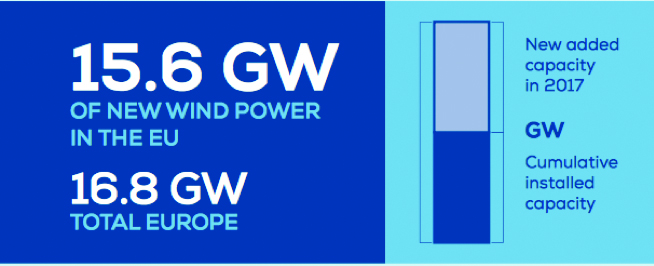
Making a Step Toward Industry 5.0
The idea of prescriptive maintenance is, by connecting assets and feeding information into a central system, to find out how the values of certain assets should be adjusted in order to optimize the performance of other assets. After the failure of a piece of equipment has been anticipated, a solution can be prescribed in order to slow down the failure and reveal whether planned production requirements can still be met.
This is a new maintenance approach that will still require some implementation time. At first, companies should develop a set of recommendations to carry out when specific changes in asset health are identified. These recommendations can be based on the data gathered in the CMMS, including equipment documents, behavior records, failure tracking, and more. This will help the maintenance team to make the right decision when a problem has been encountered.
For example, if a wind turbine fails, a certain condition-monitoring data is produced so it can help to anticipate similar events in order to mitigate their occurrence in the future. In this case, it depends on which data you would like to take into account, which turbine’s components should be monitored, and how often preventive actions should be executed, according to you. With prescriptive analytics, a software is analyzing all possible data related to the asset: parts’ behavior, but also proximity to cities and construction sites, accident reports, and more. In the end, the program is prescribing you the best “remedy” that can suggest the frequency of maintenance interventions, reducing or maximizing certain metrics, the exchange of a blade, etc.
The real-time wind-farm optimization via Big Data is not a dream anymore. Costly unplanned maintenance can be significantly minimized with the help of the Industrial Internet of Things and Industry 4.0. A smart CMMS will help business owners forecast failures and in the same time ensure production schedules are met, environmental standards are in compliance, and customer demands are satisfied.
And for all those leaders who would like to gain a competitive advantage, prescriptive analytics bring wind-turbine maintenance to the next level. As the Internet of Things continues to expand, artificial intelligence is about to become a reality in the renewable energy sector.
References
1) Performance and Reliability of Wind Turbines: A Review Sebastian Pfaffel, Stefan Faulstich and Kurt Rohrig; Fraunhofer Institute for Wind Energy and Energy System Technology.


















